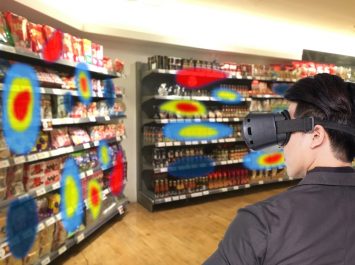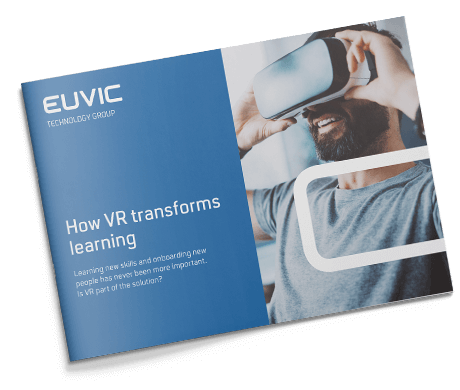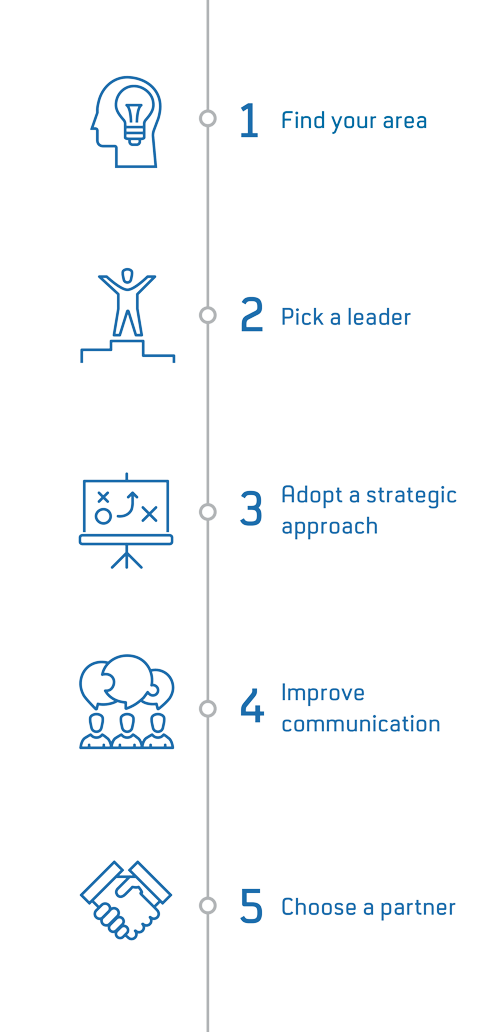
5 non-obvious business VR applications
28 December 2018
It helps professional drivers practice dangerous situations on the road and provides guidance on how to optimize placement of goods on the shelves. A few years ago, VR technology was primarily associated with entertainment. Today, it is a technology finding more and more business applications.
Until recently, VR-based solutions were associated with consumer goods, predominantly entertainment and could be encountered in museums, galleries and in theatres, simulating participation in a concert or sports competitions. They were also sometimes associated with such scientific disciplines as medicine – improving doctors’ skills without the risk of complications for the patient.
Lately, however, VR has found itself useful in business applications and many industries are noticing the potential of this technology in B2B relations. And naturally, more and more companies that specialize in providing IT solutions for business have VR-based solutions in their offer as well. “At Euvic we have worked with VR-solutions for over 5 years, building VR-solutions and a world-class LMS-solution to train everyone, from fire-fighters to bus drivers,” says Andreas Södermark, CEO at Euvic Sweden.
According to International Data Corporation (IDC), the largest source of VR/AR revenues in 2017 is consumers. However, in the near future other segments such as process manufacturing, government agencies, retail, construction, transportation, and professional services will outperform the consumer segment. IDC expects that the industry cases attracting the largest investment will be retail, showcasing ($442 million), on-site assembly and safety ($362 million), and process manufacturing training ($309 million). By the end of the forecast period, the largest industry use cases will be industrial maintenance ($5.2 billion), public infrastructure maintenance ($3.6 billion), and retail showcasing ($3.2 billion).

Download our newest whitepaper “How VR transforms learning”
Let’s take a look at the 5 industries where VR is already changing the business operations!
1.The food market – retail chains. The American store chain Walmart is an example of a traditional company operating in a traditional industry, which is undergoing rapid digital transformation. Over the last few years it has strongly developed the e-commerce segment and, recently, it has successfully implemented VR technology. The company has just announced that by the end of the year it will have distributed over 17,000 Oculus Go VR headsets among its employees to train, among others, its customer service. Previously they used VR in the academy, where managers and executives are trained and, for example, in 2017 Walmart used VR to better prepare for the Black Friday sale. Simulations and training sessions helped improve service and optimize sales. Nearly 200 training centres for employees also provide guidance on how to react in other unusual situations that may occur in stores, as well as how to ensure better placement of products on the shelves.
2. Aviation industry. The largest passenger aircraft manufacturers have been using virtual reality solutions for a long time. Airbus carried out its first VR project as early as in 2004 at its Hamburg centre. Today the company uses virtual and augmented reality in many ways. Heads-up displays support pilots during certain flight phases. Company’s engineers use VR to see, interact with and adjust 3D digital models, before the parts are actually made. Since 2011, Airbus engineers and operators have used a hand-held device that displays a 3D model on top of the real aircraft, providing insight into size and positioning. And, at the beginning of this year, Airbus released an iOS app that allows the passengers to connect with the A380, including taking a sneak peek at the cockpit.
3. Retail sales. The world’s largest companies use VR technology to improve their sales networks, delivery system and service quality. For example, in 2016, Ikea launched its Virtual Reality Kitchen Experience in Australia to help customers discover kitchen features and imagine how they would feel in their own home. Audi, in cooperation with technological partners, has developed a simulation of various versions of its own cars, which can be tested using VR in a situation where, for example, a given model version is not available in a showroom. This solution provides a very good simulation of both the driving experience as well as allows the customer to see the car from a different perspective than that of a driver. On top of that, it allows you to “X-ray” the interior and see what the “frame” of the vehicle looks like.
4. Education and expert training. Many commercial training and educational projects use VR solutions. It is not about making their offer more attractive, but about bringing better quality and efficiency (nothing teaches as effectively as practical training). This is much more than listening to a lecture. In December 2017, the University of Virginia presented a virtual classroom project using VR technology, and many start-ups developing VR technology are running projects to make life easier for trainers and lecturers (e.g. to practice speaking in public).
5. Development of internal processes through improvement of employees. It is much better to learn in neutral and safe conditions than from one’s own mistakes – especially when an employee’s mistake may cost a lot of money. VR gives you the opportunity to test extreme conditions without the risk of incurring costs. It can also recreate a specific situation from the past so that you can try to find out what caused the error. In the US the police are practising in this way, and in other countries –train drivers, tram drivers and public transport drivers. “In Sweden, we are currently implementing a project for Arriva, thanks to which bus drivers can improve their skills and the company is able to achieve a number of real benefits and financial savings,” explains Andreas Södermark, CEO at Euvic Sweden.
The outlays on VR applications are growing extremely fast and, according to experts, will continue to do so in the nearest future. IDC predicts that the VR/AR market will grow during the period of 2017-2021 by around 100% annually.
If you are thinking about introducing VR into your company, we have prepared a guide for you. Be sure to check out the five steps for successful VR implementation:

Read more: All you need to know if you want to introduce VR in your organization
back
